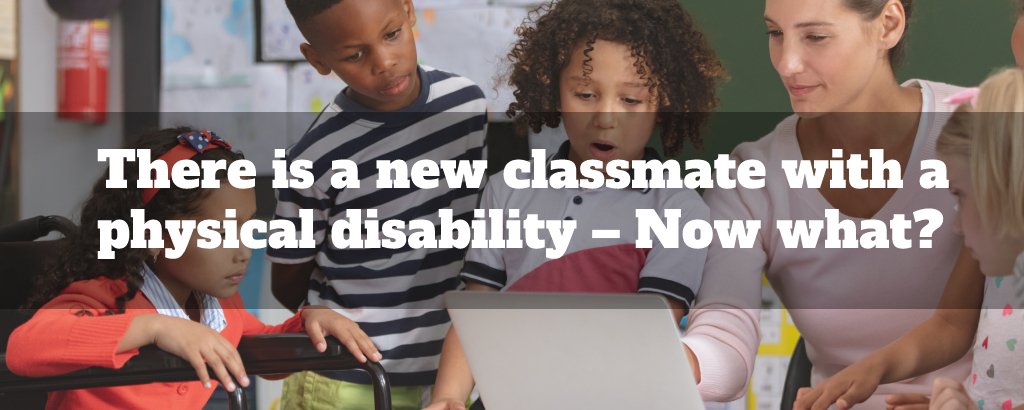Many people feel awkward when meeting someone with a disability because they fear they will say or do the wrong things. Perhaps you are one of them.
Humans with impairments exist.
You should treat these disabled people as normal and respect their variances just as you would appreciate the uniqueness of anyone else. Please don’t belittle them, either physically or metaphorically.
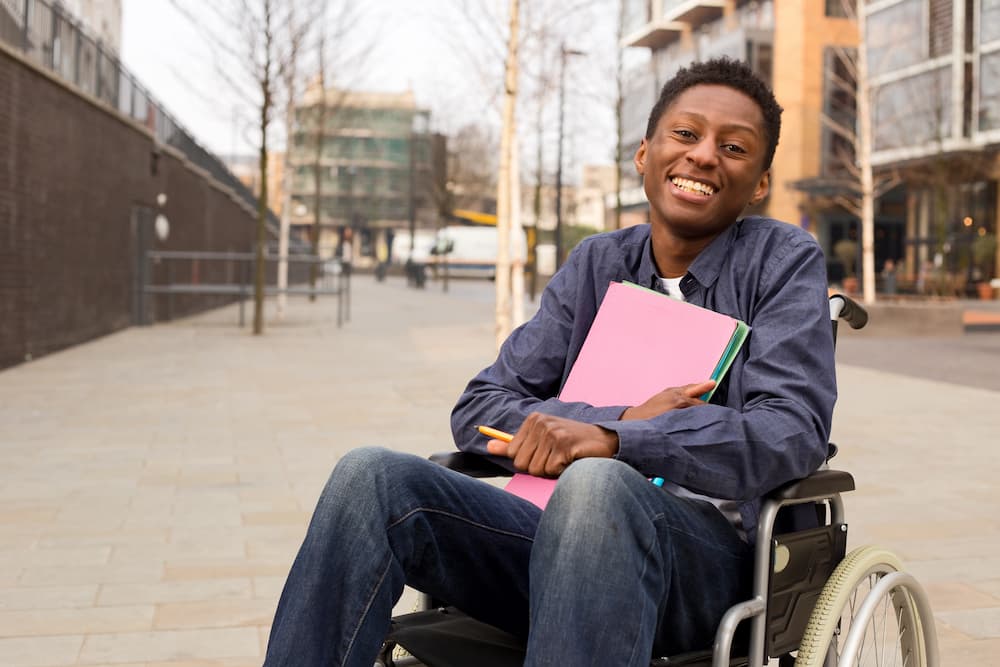
Maintain your usual tone of voice and speak to someone with a disability as you would to anyone else. Don’t ask or act condescendingly. Ask no more than you would of someone who did not have a disability. Each of us is an individual with our own set of strengths and weaknesses.
However, not all people who experience disability are comfortable opening up about their strengths and weaknesses. Until you’ve established a rapport with someone, it’s best to hold off on asking private inquiries.
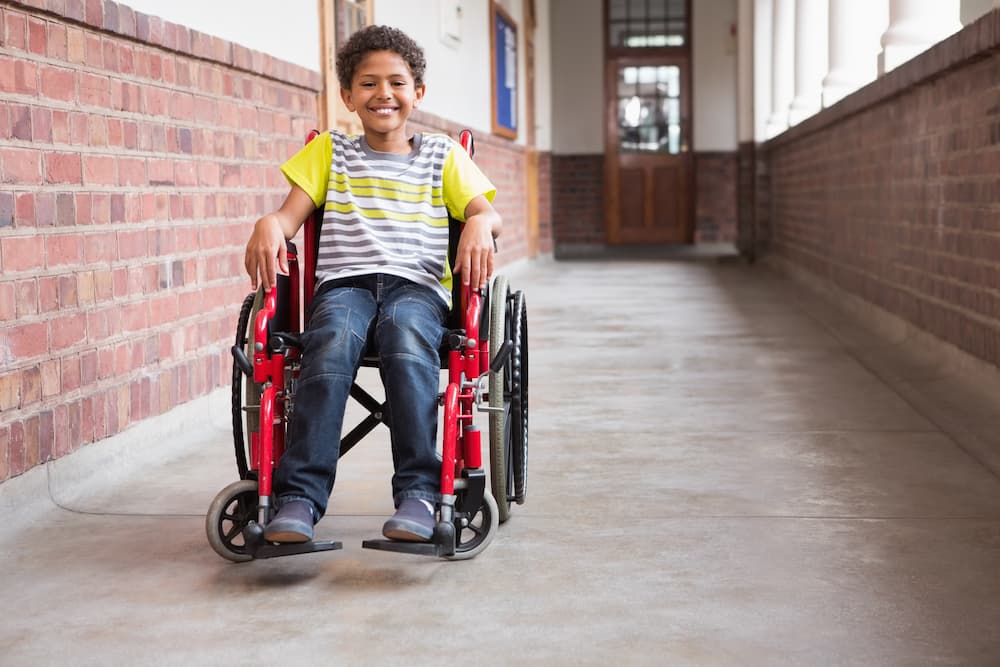
Do you have a new physically disabled student in your class?
One of your new high school classmates has a physical impairment. I’m sure you’re having a hard time figuring out how to approach this classmate.
Neither adults nor kids can afford to ignore or avoid them. On the contrary, we need to figure out ways to treat them like regular people and include them in our activities.
Physically impaired folks require your attention and care.
When interacting with people with physical disabilities, it is crucial to remember that they are also humans.
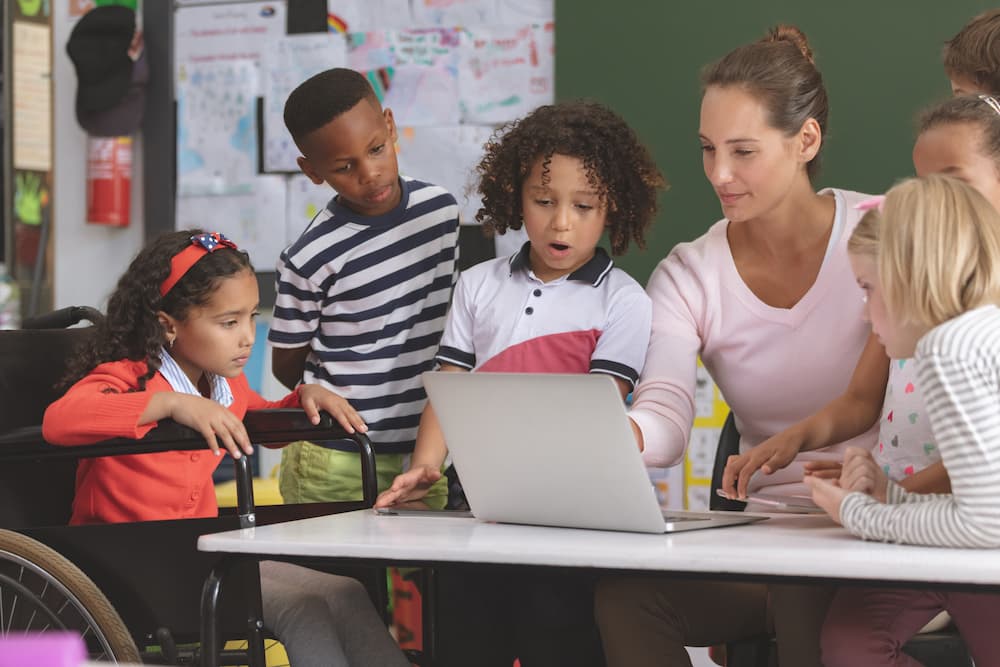
Their disability is but one of many distinguishing characteristics. People with disabilities have the exact needs as everyone else, including the fundamental right to be treated with dignity and respect at all times.
Concentrate on abilities rather than limitations
Focus on the person’s abilities rather than their impairments when interacting with people who are disabled. Disabled people provide enormous diversity, originality, and creative energy to our society as individuals with a wealth of information, capabilities, talents, passions, and experiences.
People with impairments may do tasks differently than people without disabilities, yet they can accomplish the same objectives.
This article will help you understand how to handle a physically and emotionally disabled person.
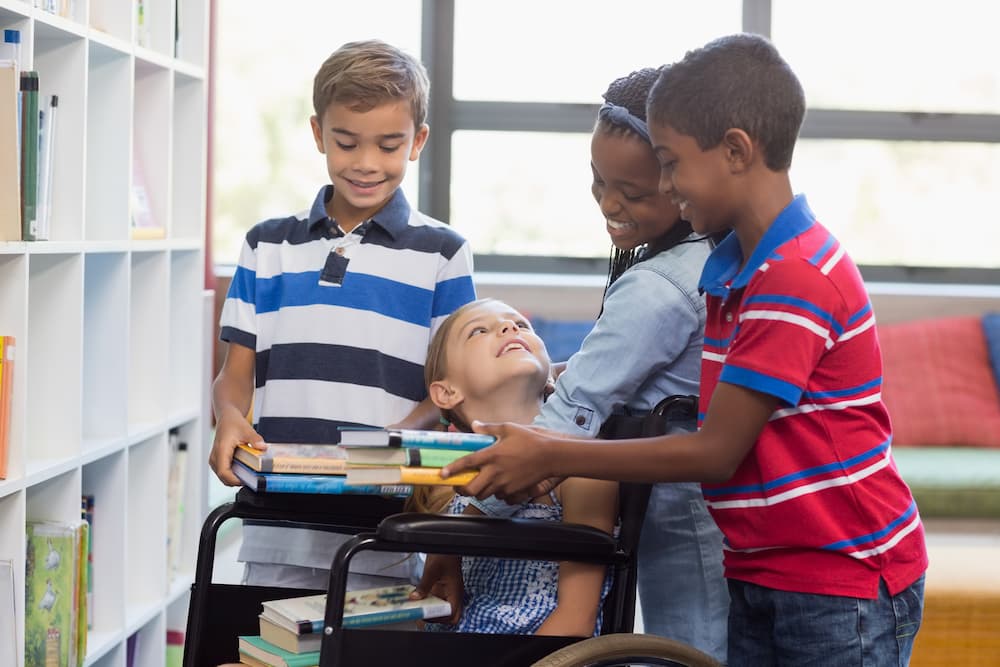
Educate yourself
Using your local library’s resources can help you greatly in your pursuit of disability awareness. There are great books for kids that tell them about the lives of people with disabilities and instruct them on engaging with them.
You could also look for movies or television shows that portray disabled persons positively.
Just be you
How can we interact with students with special needs is a question you might consider. The most straightforward response to this query is to be yourself.
A disability doesn’t always affect a child’s capacity to react to those around them. Even though they lack speech or cannot engage in some physical activities, they still enjoy listening to your conversation or cracking a joke.
Find ways to engage that reflect your disabled classmate's personality.
Though it’s essential to challenge yourself occasionally, there’s no need to alter your character or engage in activities you wouldn’t try even if friends surrounded you.
If you have a new classmate with a physical disability, be friendly to them and assure them that they, too, are normal.
Acknowledge Limits
It’s great that you want to be accepting of others, but it’s also essential to learn to respect the boundaries and difficulties of your classmates, even if they don’t always mesh well with your own.
Recognize the limits and challenges of your disabled peers
For instance, children on the autism spectrum may resist physical contact. Touches such as pats on the back or hugs may seem innocuous, but they could be very upsetting to a child with special needs. Keep in mind that the way you act can have an impact on those around you.
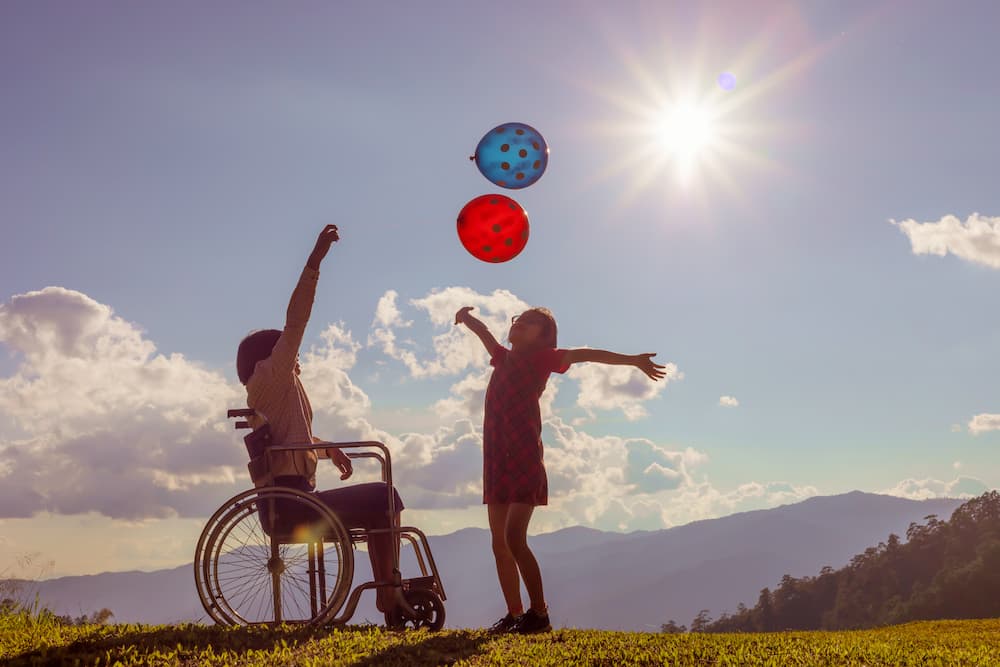
Put on some music; music is a global language.
Sometimes, a shared love of music may help students of all backgrounds and skill levels become closer friends and colleagues. A youngster with nonverbal or physical limitations can communicate with others via music because of how widely understood it is.
Music can be extraordinarily effective in establishing connections with disabled individuals.
Connecting with disabled people might be difficult, but music can do wonders.
They can relate to the words, even in goofy songs, and have fun with the actions and voices of their peers. Teens and preteens who have a friend or classmate with special needs may find this particularly useful.
Don’t Be Afraid to Communicate
You may get your non-verbal classmate to talk to others by just starting a discussion with him. The conversation is a great way to show interest in another person and bond with them.
Spin a tale that can establish a connection
Taking the time to say “hello” or share a quick anecdote about the morning’s events at the school cafe can significantly impact you. It’s OK to chat and hear about their day. Don’t let them talk about it for 20 minutes if they don’t want to.
You should learn the value of social relationships. Ensure you understand that this includes your classmates with physical or mental limitations.
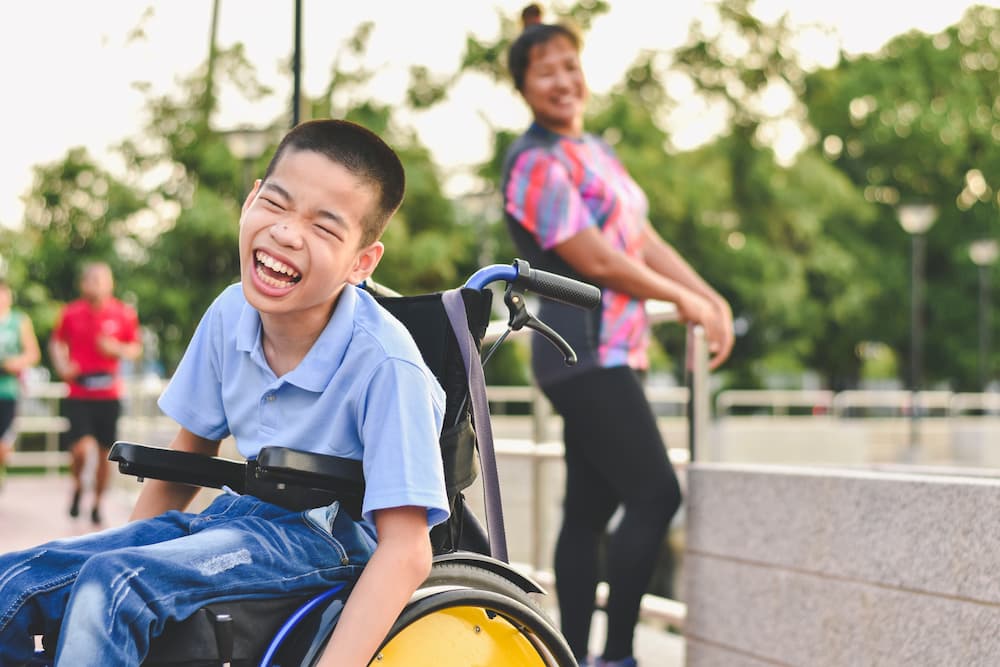
Admit weaknesses
All children, regardless of age or development, have their boundaries. These restrictions are typically exacerbated in children with special needs due to the physical or sensory difficulties connected with the underlying disease.
What they need is for you to understand them.
You should be ready for the possibility that you will observe your classmate with strange behavior or experience an episode in which they appear to be beyond control. These episodes, however, are essential to their disability and should be expected.
Your role is not to stop things from happening or lessen their impact when they do. Just understand their situation.
Be careful what you say.
Avoid using antiquated remarks that might be considered offensive. We no longer use phrases like “handicapped” or “wheelchair bound” to describe people who use wheelchairs. Many people who use wheelchairs dislike the term “bound” since it implies they are trapped in their chairs.
Don't damage disabled individuals with offensive comments
Wheelchairs provide independence from mobility aids. The more accurate word is “wheelchair accessible.” The term “handicapped” is so broad that many automatically think of people who don’t have control over their lives. More accurately, they should be labeled as disabled.
You can view this video, which discusses disability awareness information about physical education and activity for those with physical disabilities.
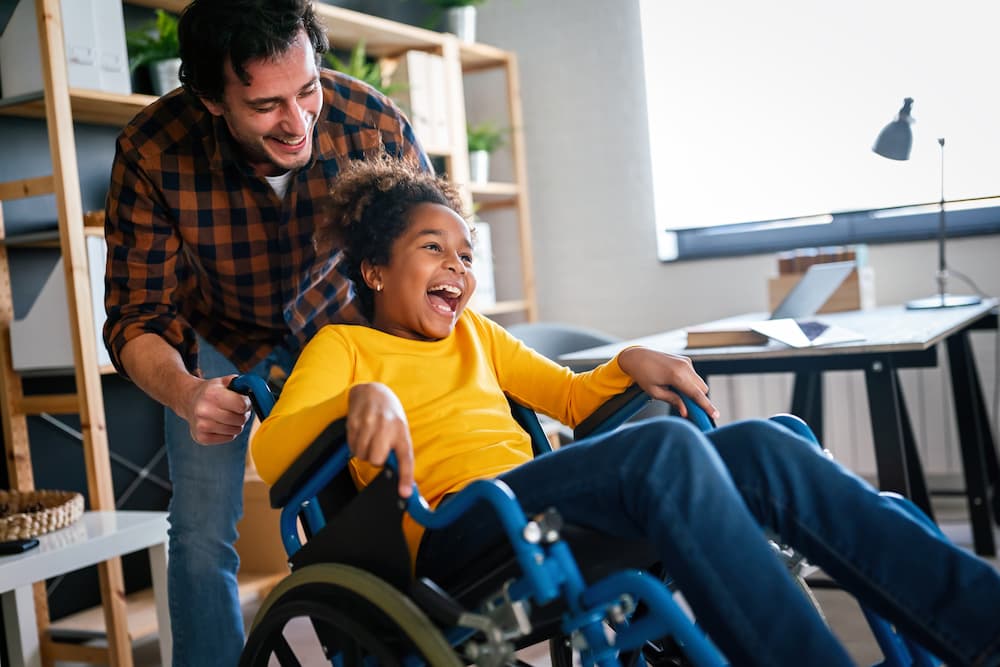
How a Parent Can Teach Children About Peers With Special Needs.
It’s crucial that parents inform their kids about the topic of special needs kids and how to handle them. They should Keep these points in mind while educating their special-needs child.
- Educate Children and Teach Them the Basics
Parents’ assistance in educating their kids about disabilities will make them better partners. Discuss impairments with their child so that they may comprehend this diagnosis. There are several resources on how to explain this to a child in a way they can understand.
Keep the lines of communication open. After finishing a book, parents can have their kids explain how they can use what they learned in their interactions with others in the class. You’ll be astonished by how wise and willing they are to attempt to include their peers with impairments in the classroom.
- Show Child That Everyone Is Unique.
People with and without disabilities each have their own set of strengths and challenges. The ability to accept the unique qualities of others is a talent that will serve a child well throughout life. Even if the child isn’t constantly interacting with a child with special needs, it’s still important to encourage them to play with various children.
- Stress that someone with a physical disability can nevertheless do things.
An impaired or physically limited child is a child. They have fun participating in group activities and chatting with other kids. All they care about is being liked and accepted by their classmates. They could need a few adjustments made to succeed.
Parents should raise their children to understand the value of including every student in the classroom and extracurricular activities. Instruct them to include students with special needs in group activities and recess games as much as possible.
- Encourage Patience.
It’s also essential to reassure the youngsters that kids with special needs can do the same things as their typically developing classmates; they just need a bit more time. Building relationships and making people feel welcome takes time and patience.
How Can Teachers Develop an Inclusive Classroom?
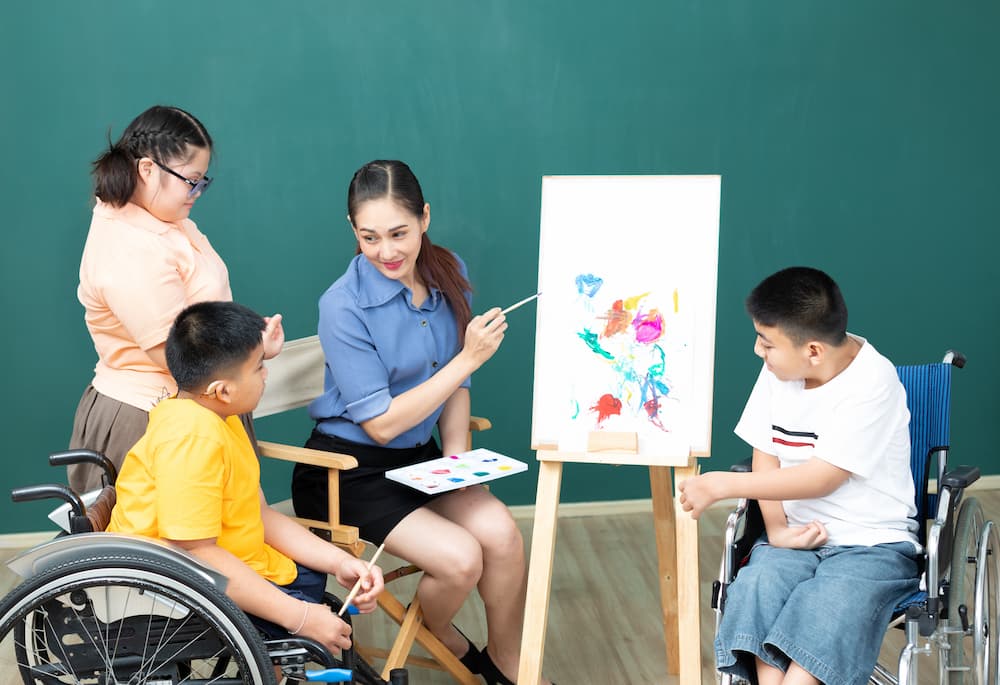
Parents may and should actively instruct their kids on how to treat others and get along with those who are different. But instructors also play an essential role in dealing with children with special needs.
- Modify Lessons to Meet the Needs of All Students
Teachers must first comprehend these demands and constraints. Teachers should adhere to the same criteria as children and parents by educating themselves on their pupils’ particular needs and limits.
Make it a priority to collaborate with the school’s experts, such as occupational therapists, speech therapists, school psychologists, exceptional education instructors, and reading specialists, to design inclusive courses that provide the necessary accommodations for all kids. If a disabled kid in the class is showing poor academic performance, a teacher should assist them and even introduce day program activities in the course as well.
- Eliminate Stereotypes
As you are aware, one of a teacher’s goals is frequently to discover what motivates their students. Then, they may apply their knowledge and abilities to assist students with their education.
- Keep a positive attitude.
There are days when maintaining a happy attitude in the classroom is highly challenging, but it is essential to retain perspective and keep the overall picture in mind. Consider that every student can succeed, and examine your teaching strategy frequently for opportunities to improve it.
